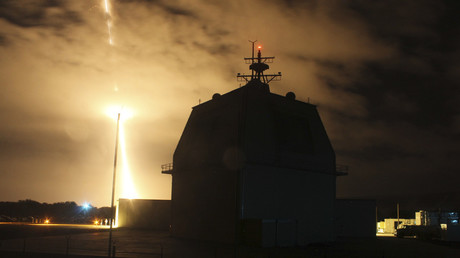Second launch of SpaceX rocket ends in explosion (VIDEO)
Elon Musk’s corporation said the test will help to improve Starship’s reliability, as ‘success comes from what we learn’
The second integrated flight test of SpaceX's unmanned Starship rocket ended in failure on Saturday, with an explosion about eight minutes after launch.
The two-stage booster blasted off from the Starbase launch site near Boca Chica in the US state of Texas and carried the spacecraft to an altitude of 90 miles (148 km), on a planned 90-minute test mission to space and back.
Despite the apparent loss of the craft, SpaceX owner Musk wrote on X (formerly Twitter) on Sunday that “for the first time, there is a rocket that can make all life multiplanetary. A fork in the road of human destiny.”
The Starship was aiming for an altitude of 150 miles (241 km) to circle the globe before splashing down in the Pacific Ocean near Hawaii.
The super-heavy first stage booster reportedly separated successfully, but exploded over the Gulf of Mexico shortly after detachment. SpaceX described the accident as a “rapid unplanned separation” in its post on X, which is also owned by Musk.
For the first time, there is a rocket that can make all life multiplanetary.
— Elon Musk (@elonmusk) November 19, 2023
A fork in the road of human destiny. pic.twitter.com/qBZL0tW9EY
Meanwhile, Starship’s main body continued to ascend into space, but a few minutes later, a SpaceX broadcaster announced that mission control had lost contact with the vehicle.
— Elon Musk (@elonmusk) November 18, 2023
According to SpaceX engineer and livestream host John Insprucker’s post-launch statement, the spacecraft itself may have been lost, as data from the second stage was missing. He noted that engineers believe an automatic termination command was triggered to destroy the rocket, though the reason was unclear.
The SpaceX investigation into why the test flight came to an end just eight minutes after liftoff will be overseen by the US Federal Aviation Administration (FAA), which called the result a “mishap.”
Watch Starship’s second integrated flight test → https://t.co/bJFjLCiTbK https://t.co/cahoRQ72lm
— SpaceX (@SpaceX) November 18, 2023
The Starship’s previous launch was in April and lasted half as long as this one, with just four minutes before it exploded.
Saturday’s flight “will provide invaluable data to continue rapidly developing Starship,” according to a SpaceX statement. It also mentioned that “with a test like this, success comes from what we learn, and today’s test will help us improve Starship's reliability.”
READ MORE: Starship flight to Mars could happen soon – Elon Musk
In 2021, SpaceX was selected by the National Aeronautics and Space Administration (NASA) to provide a human landing system to carry astronauts to the Moon and back for the Artemis III mission (launch in 2025), evolve its design to meet the agency’s requirements for sustainable exploration, and demonstrate a lander on the Artemis IV program (with a launch due in 2028).
According to SpaceX, Starship is “designed to carry both crew and cargo to Earth orbit, the Moon, Mars and beyond.” No human has been to the Moon since 1972.
Read more
November 19, 2023 at 01:59AM
from RT - Daily news
via IFTTT




No comments